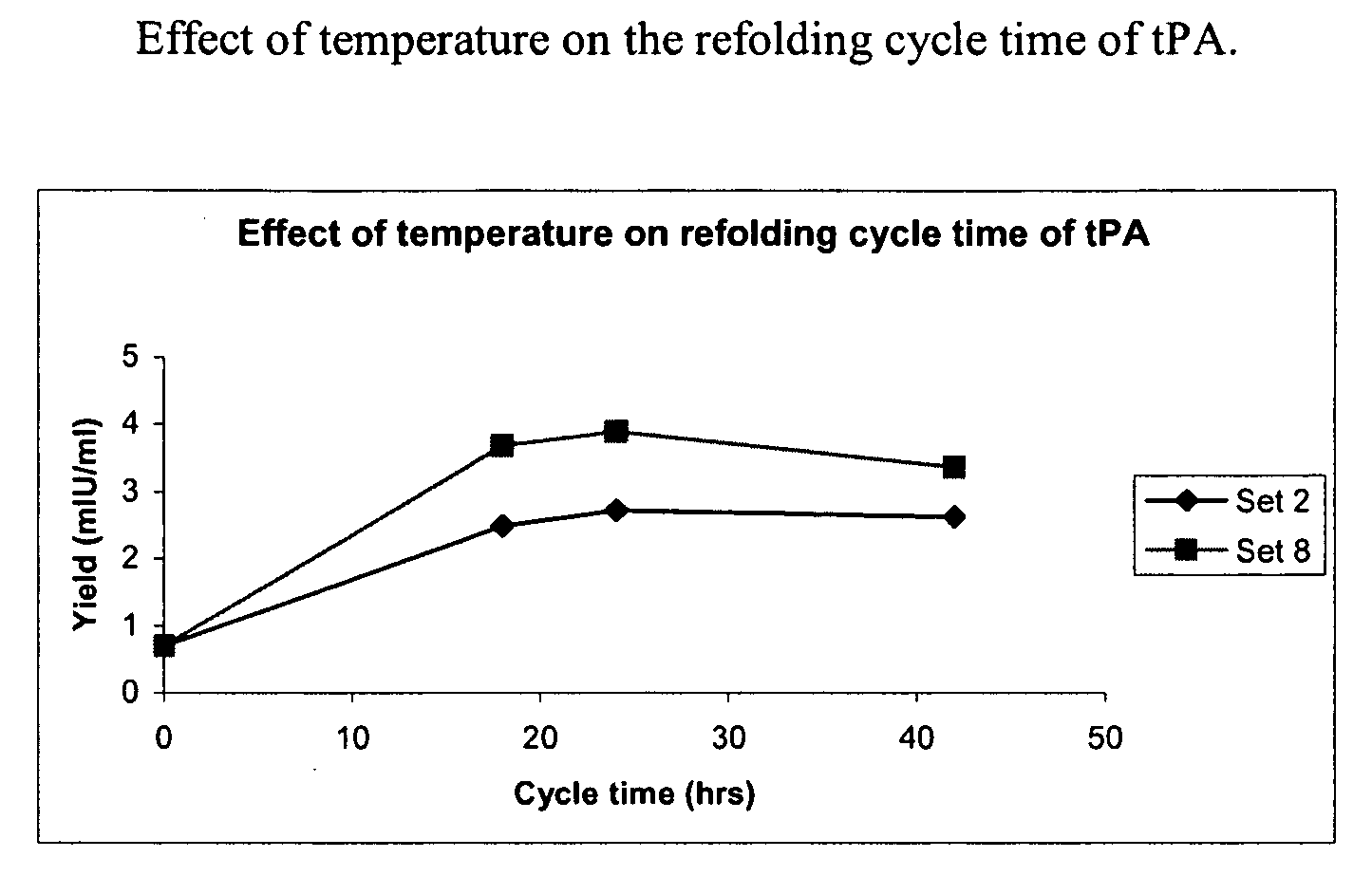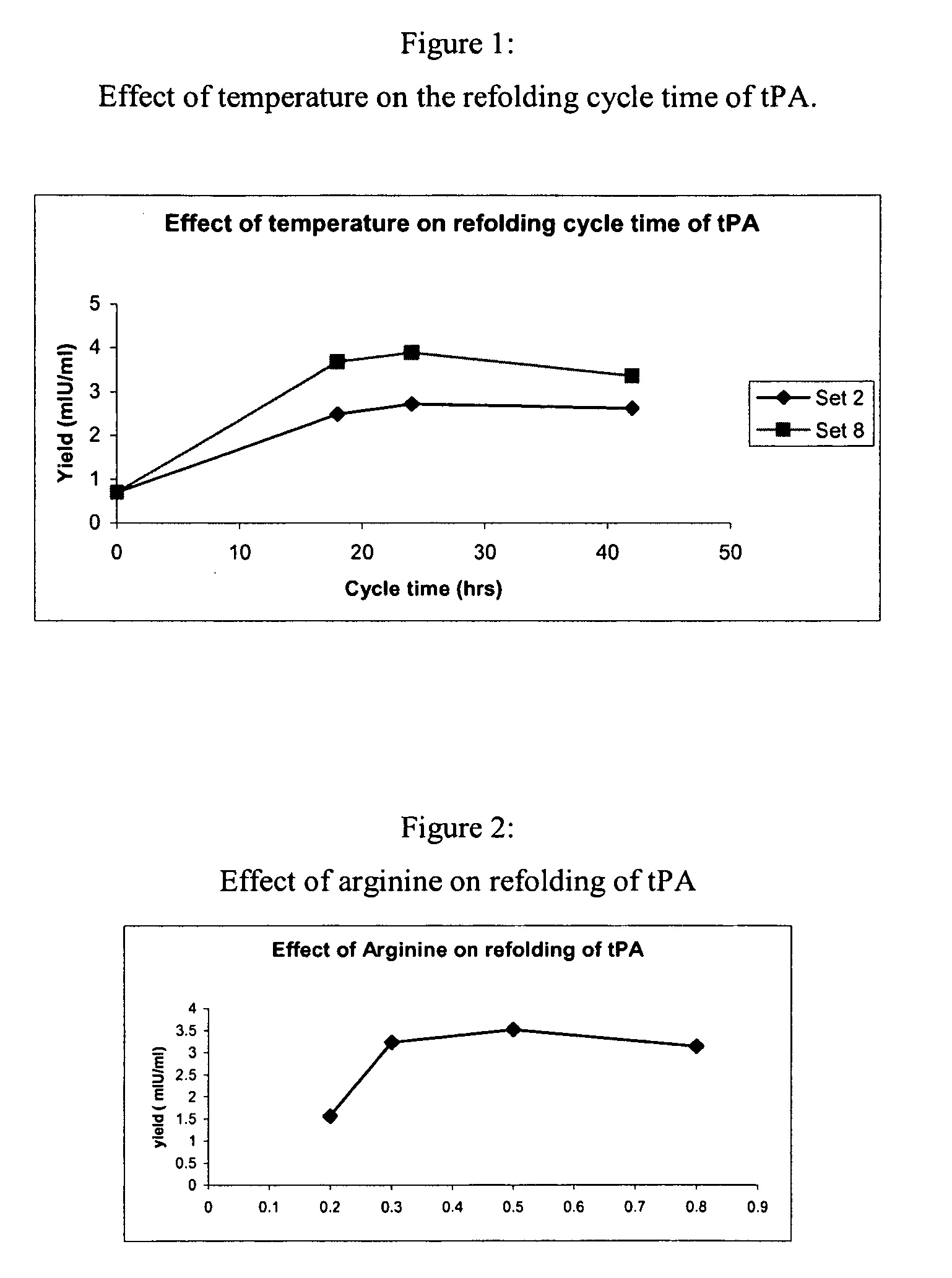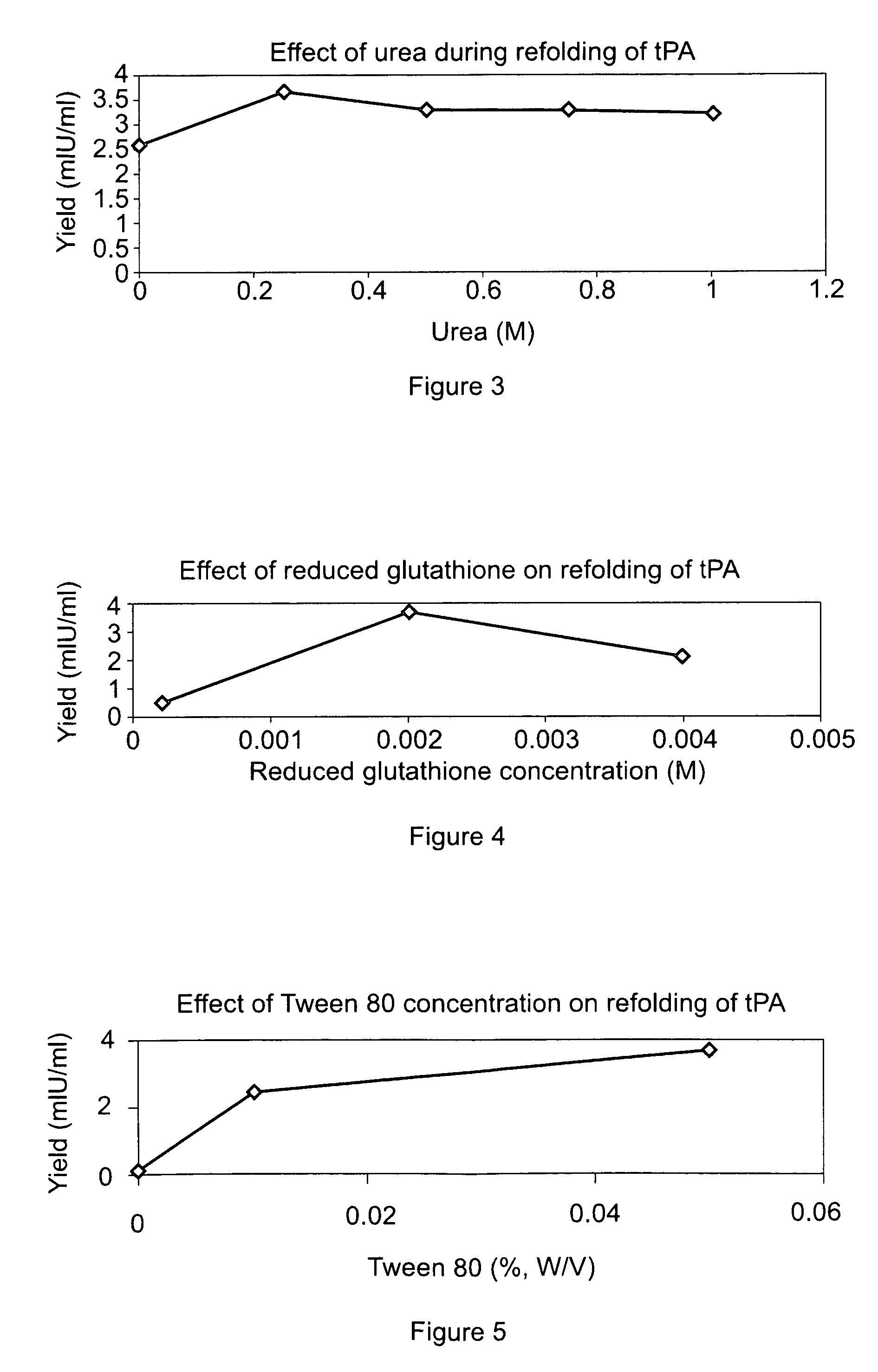Process for purifying recombinanat tissue plasminogen activator (TPA)
a technology of plasminogen activator and purification process, which is applied in the direction of biochemistry apparatus and processes, enzymes, peptidases, etc., can solve the problems of obstructing the flow of critical vessels, obliterating valves and other structures, and events that could be fatal, so as to reduce the loss of protein, high starting conductivity, and high conductivity
- Summary
- Abstract
- Description
- Claims
- Application Information
AI Technical Summary
Benefits of technology
Problems solved by technology
Method used
Image
Examples
example 1
Preparation of tPA
[0075]Human truncated tPA (i.e., amino acids 69-527 of the full length human protein) was recombinantly expressed in E. coli using available techniques and DNA constructs. Inclusion bodies containing recombinantly expressed tPA protein were harvested after bacterial cell lysis, and solubilized in 6 M to 8 M (i.e., 8 M in this Example) guanidium hydrochloride (1:30 w / v) in 200-300 mM (i.e., 200 mM here) DTT by incubating with stirring at room temperature for 3 hours. Thereafter, the mixture was adjusted to pH 3 with hydrochloric acid (conc) and dialyzed overnight in 6-8 M (i.e., 8 M here) urea at 10-15° C. The dialyzed sample was then diluted 10 to 20 fold with 6-8 M urea (i.e., 8 M here) and gradually supplemented with Tris (to a final concentration 50 mM) and oxidized glutathione (to a final concentration 25 mM) after adjusting the pH to 9.3 with 3 M sodium hydroxide solution, and then incubated for 3-5 hours at room temperature with stirring.
example 2
Refolding of tPA Protein after Solubilization
[0076]The sample was then diluted 4 to 8 fold with a refolding buffer having a pH of 8.5, and containing arginine (0.5 M) Tris buffer (150 mM, pH 8.5), Na-EDTA salt (2 mM), Tween 80 (0.05%) (w / v), reduced-state glutathione (0.2 mM) and urea (0.25M), and incubated at temperatures between 10° C. to room temperature (RT) for 16-48 hours with stirring. After incubation in the refolding buffer, the sample was diluted with 10 to 50 mM (i.e., 20 mM here) sodium citrate buffer, pH 4.0 to 5.0 (pH 4.0 here), containing 1 M urea to bring the final arginine concentration down to 0.3 M and to adjust the pH to 4.0 to 5.0 (pH 4.5 here).
example 3
Purification
[0077]The sample was then loaded on a SP Sepharose FF (Amersham) column (80 to 160 ml resin used for proteins from 0.5 to 1 gm of IBs) pre-equilibrated with equilibrium buffer of 10 to 20 mM sodium citrate buffer containing 0.3 M arginine, having a pH 4.5. After sample loading, the column was washed with 5 to 10 column volumes (CV) of equilibration buffer and bound proteins were eluted with a linear gradient (30 CV) or step gradients of equilibration buffer (Elution Buffer A) and equilibration buffer containing 1 M sodium chloride (Elution Buffer B). The purity achieved as evidenced by RP-HPLC (C-18) was not less than 98%. The protein was fully active as determined by Chromzyme tPA activity assay (Roche).
RP-HPLC: C-18 Reverse Phase Analytical HPLC Column
[0078]In a reverse phase chromatography, the stationary phase is polar and the mobile phase used for elution has increasing non-polarity, which helps elute proteins based on their hydrophobicity. A C-18 reverse phase colu...
PUM
| Property | Measurement | Unit |
|---|---|---|
| Temperature | aaaaa | aaaaa |
| Fraction | aaaaa | aaaaa |
| Time | aaaaa | aaaaa |
Abstract
Description
Claims
Application Information
 Login to View More
Login to View More - R&D
- Intellectual Property
- Life Sciences
- Materials
- Tech Scout
- Unparalleled Data Quality
- Higher Quality Content
- 60% Fewer Hallucinations
Browse by: Latest US Patents, China's latest patents, Technical Efficacy Thesaurus, Application Domain, Technology Topic, Popular Technical Reports.
© 2025 PatSnap. All rights reserved.Legal|Privacy policy|Modern Slavery Act Transparency Statement|Sitemap|About US| Contact US: help@patsnap.com



